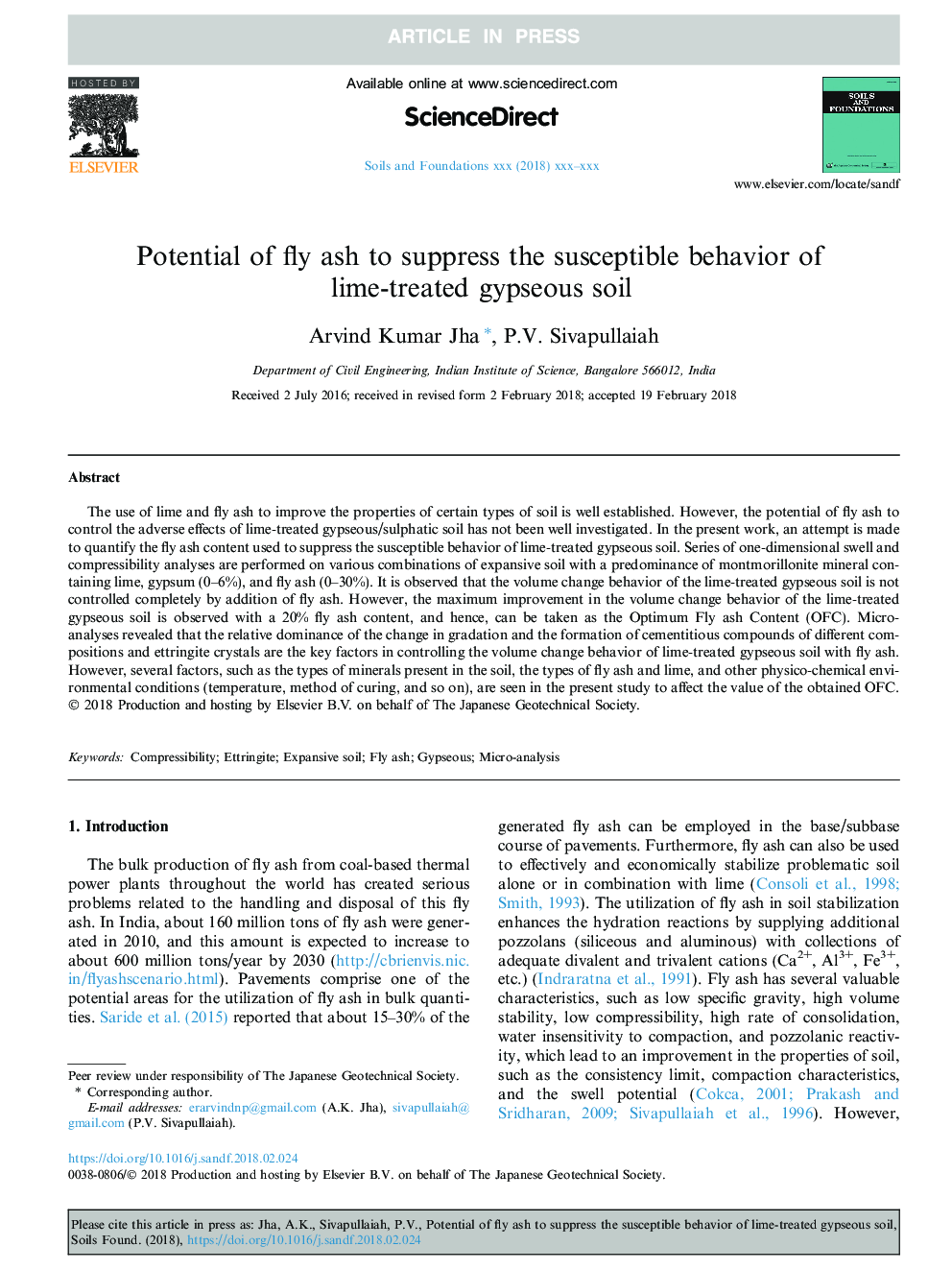| Article ID | Journal | Published Year | Pages | File Type |
|---|---|---|---|---|
| 6773736 | Soils and Foundations | 2018 | 17 Pages |
Abstract
The use of lime and fly ash to improve the properties of certain types of soil is well established. However, the potential of fly ash to control the adverse effects of lime-treated gypseous/sulphatic soil has not been well investigated. In the present work, an attempt is made to quantify the fly ash content used to suppress the susceptible behavior of lime-treated gypseous soil. Series of one-dimensional swell and compressibility analyses are performed on various combinations of expansive soil with a predominance of montmorillonite mineral containing lime, gypsum (0-6%), and fly ash (0-30%). It is observed that the volume change behavior of the lime-treated gypseous soil is not controlled completely by addition of fly ash. However, the maximum improvement in the volume change behavior of the lime-treated gypseous soil is observed with a 20% fly ash content, and hence, can be taken as the Optimum Fly ash Content (OFC). Micro-analyses revealed that the relative dominance of the change in gradation and the formation of cementitious compounds of different compositions and ettringite crystals are the key factors in controlling the volume change behavior of lime-treated gypseous soil with fly ash. However, several factors, such as the types of minerals present in the soil, the types of fly ash and lime, and other physico-chemical environmental conditions (temperature, method of curing, and so on), are seen in the present study to affect the value of the obtained OFC.
Related Topics
Physical Sciences and Engineering
Earth and Planetary Sciences
Geotechnical Engineering and Engineering Geology
Authors
Arvind Kumar Jha, P.V. Sivapullaiah,
